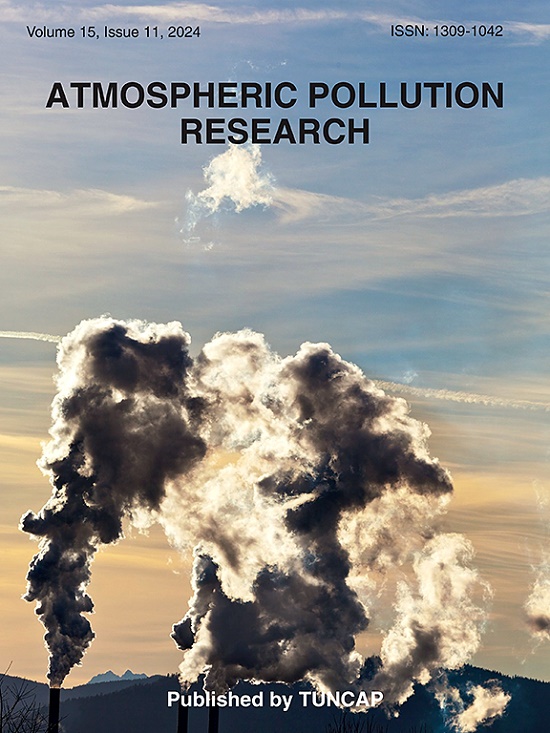受有色金属矿山影响的中国特大城市pm2.5结合重金属的来源特定健康风险
IF 3.9
3区 环境科学与生态学
Q2 ENVIRONMENTAL SCIENCES
引用次数: 0
摘要
有色金属的开采和冶炼被认为是大气中重金属的最大来源之一,对人类健康构成严重威胁。为此,本研究针对中国某特大城市有色金属矿山的潜在影响,探讨2019年6月至2020年1月夏、秋、冬季PM2.5中HMs的特征及健康风险。结果表明,从夏季到冬季,10个相关HMs的平均PM2.5浓度和总浓度分别从25.5增加到48.5 μ m−3和从51.5增加到133 ng m−3。结合元素和来源的健康风险评价方法发现,从夏季到冬季,6种致癌HMs (As、CR、Co、Cd、Ni和Pb)的总致癌风险(CR)也呈现出明显的增加趋势。但夏季总CR (1.12 × 10−5)仍超过最小可接受风险水平。3个季节CR的主要贡献率均为工业排放和煤炭燃烧,合计贡献率均超过82.5%。进一步分析表明,3个季节工业排放的CR主要来源于CR、Co和Cd,而煤炭燃烧的CR主要来源于As,凸显了未来有色金属矿山影响地区控制CR、Co和Cd相关行业和燃烧As排放的重大挑战。本文章由计算机程序翻译,如有差异,请以英文原文为准。
Source-specific health risks of PM2.5-bound heavy metals in a Chinese megacity impacted by non-ferrous metal mines
Non-ferrous metal mining and smelting are considered to be one of the largest sources of heavy metals (HMs) to the atmosphere, posing a serious threat to human health. For this reason, this study addressed the potential impacts in a Chinese megacity affected by non-ferrous metal mines, and explored the characteristics and health risks of HMs in PM2.5 during summer, autumn, and winter from June 2019 to January 2020. The results showed that the average PM2.5 concentration and total concentration of 10 associated HMs increased from 25.5 to 48.5 μg m−3 and from 51.5 to 133 ng m−3, respectively, from summer to winter. Combining methods for health risk assessment of elements and sources, we found that the total carcinogenic risk (CR) of six carcinogenic HMs (As, Cr, Co, Cd, Ni, and Pb) also exhibited a clear increasing trend from summer to winter. However, the total CR (1.12 × 10−5) in summer still exceeded the minimum acceptable risk level. The main contributors to CR in each of the three seasons were consistently industrial emissions and coal combustion, with their combined contributions exceeding 82.5%. Further analysis indicated that in all three seasons, the CR of industrial emissions mainly resulted from Cr, Co, and Cd, while the CR of coal combustion was primarily due to As, highlighting the significant challenges of controlling Cr-, Co-, and Cd-related industries and As emissions from combustion in areas affected by non-ferrous metal mines in the future.
求助全文
通过发布文献求助,成功后即可免费获取论文全文。
去求助
来源期刊

Atmospheric Pollution Research
ENVIRONMENTAL SCIENCES-
CiteScore
8.30
自引率
6.70%
发文量
256
审稿时长
36 days
期刊介绍:
Atmospheric Pollution Research (APR) is an international journal designed for the publication of articles on air pollution. Papers should present novel experimental results, theory and modeling of air pollution on local, regional, or global scales. Areas covered are research on inorganic, organic, and persistent organic air pollutants, air quality monitoring, air quality management, atmospheric dispersion and transport, air-surface (soil, water, and vegetation) exchange of pollutants, dry and wet deposition, indoor air quality, exposure assessment, health effects, satellite measurements, natural emissions, atmospheric chemistry, greenhouse gases, and effects on climate change.
 求助内容:
求助内容: 应助结果提醒方式:
应助结果提醒方式:


